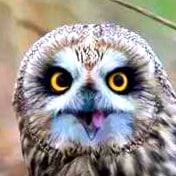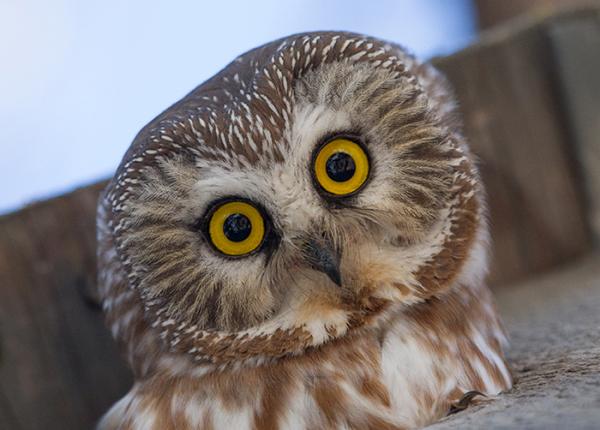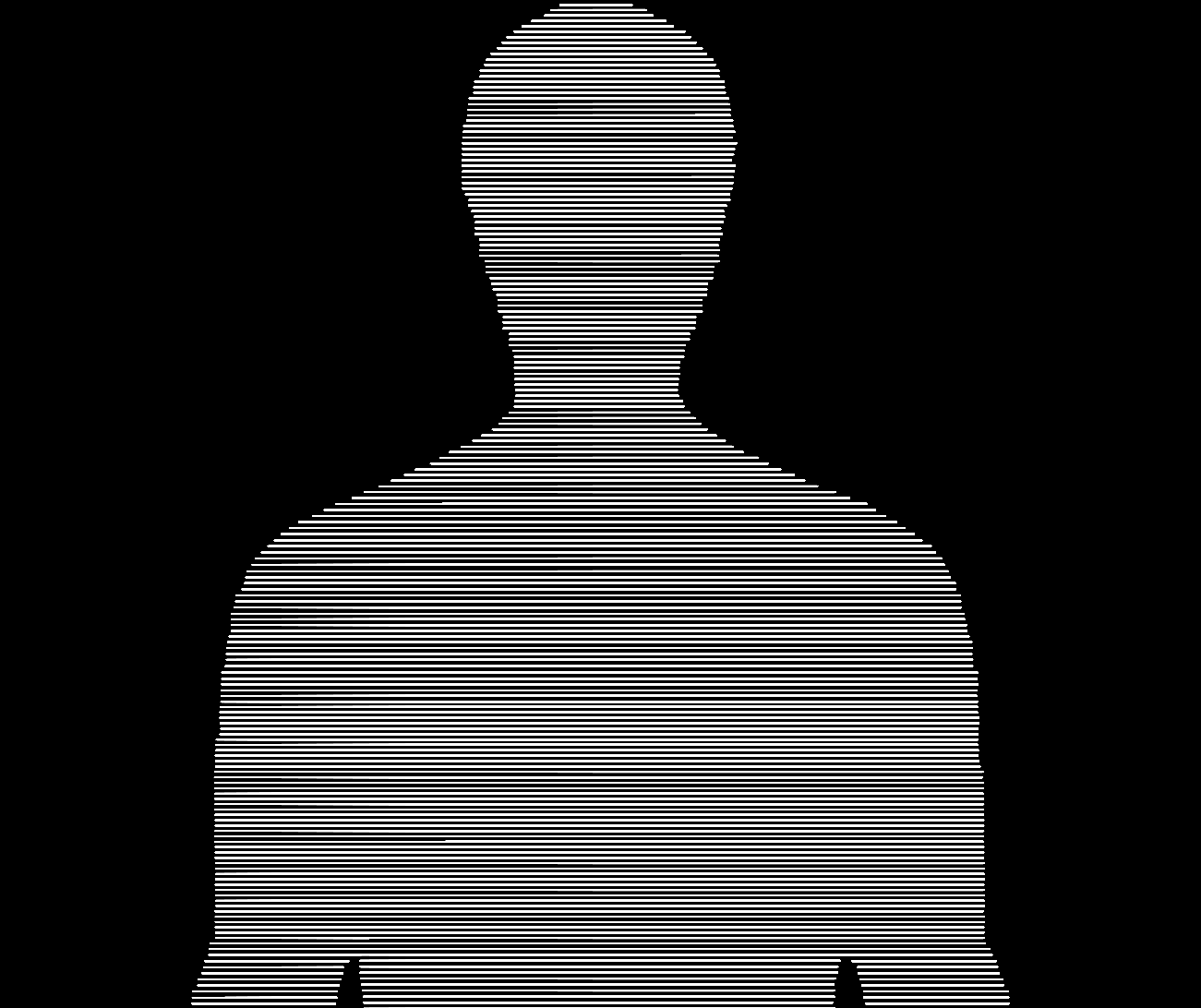From SW Virginia Wildlife Center of Roanoke
Wink!
Meet BADO 2025-0134, the Barred Owl! (Strix varia)
This beautiful owl came to us the way many patients do: As a victim of a vehicle strike. Like most owls, they enjoy hunting by roadsides at night, since the open roadway is the perfect place to spot a scurrying rodent and swoop in for the kill!
Unfortunately, though, nature didn’t give them the innate instinct to look both ways before flying into the road, leading to catastrophic consequences. After all, Barred Owls have existed for at least the last 11,000 years… Cars have only been around for about a century! This sudden change in their ecosystem is brand-new, geologically speaking.
Owls’ heads are about 60% eyeball, meaning that any head injury probably also causes an eye injury. Such was the case for BADO 2025-0134, who came in with limited vision and numerous ocular injuries. Their left eye improved, but the right eye continued to decline, resulting in its removal through a procedure called evisceration.
For most raptors, losing an eye is a death sentence. They require both eyes for depth perception, which is critical when you spend your time hunting for prey on the wing!
For owls, though, their freaky ears (we say this endearingly) are the key to surviving with only one eye! One ear is set slightly lower on their head, while the other ear is set slightly higher. This causes a very slight difference in when sound waves hit each ear, allowing the owl to triangulate the exact location of their prey in complete darkness!
Missing an eye still isn’t an ideal, but adult owls with experience hunting can and do adjust to their handicap with their super-powered hearing. And so far, BADO 2025-0134 is doing well in adjusting to their new “outlook” on life! With luck, they will be a candidate for release back to the wild very soon.
That is so cool that he is a candidate for release! I did not know that!
Head/eye injuries can be so serious to owls since those eyes make up so much of their heads and they tend to often smack face first into whatever they hit. We just lost a cute young Screech due to a double eye injury. It’s so amazing to see ones like this Barred have another opportunity to be able to live out its full natural life after such a disaster. It really makes me love the owls and the care providers even more for their stubborn persistence.
i’d say give it an eyepatch so that it looks like a pirate, but that’d mess up the facial disc or whatever its called
We could go for interchangeable novelty glass eyes, ala Last Action Hero.
I wonder if the “head tilt” that dogs do when they’re confused is some form of this adaptation.
It does seem to have potential similarities. Even with the owl head bobbing, it seems to be when they really want to 100% focus on something.
I haven’t seen the young GHO eat yet, so I try to hide from it. I did my best job so far last week as the rain helped mask my sound I’m thinking. I hid behind the slats of the fencing and poked an eyeball around the corner. I figured it could still see me just fine, but without my whole outline, I wasn’t sure it could recognize what I was.
That was the first time I saw it bob and weave its head while looking in my direction. It did it a few times. I was trying to stay as still as possible, and I was wondering just how good its hearing is. Can it hear me breath? Can it hear my feet keeping balance on the uneven ground? If they can hear mice under leaves with pinpoint precision, it doesn’t seem that unlikely.
It eventually took some looks away from me, but as nothing else more interesting came up, it kept turning back to where I was and analyzing. The rain started picking up and I had actual work to do other than trying to outsmart owls, so I called it quits and chalked another win up for the GHO.
For most raptors, losing an eye is a death sentence. They require both eyes for depth perception, which is critical when you spend your time hunting for prey on the wing!
Yes, that was my thought, poor owl… ):
For owls, though, their freaky ears (we say this endearingly) are the key to surviving with only one eye! One ear is set slightly lower on their head, while the other ear is set slightly higher. This causes a very slight difference in when sound waves hit each ear, allowing the owl to triangulate the exact location of their prey in complete darkness!
Thank you, nocturnal adaptions to low/no light!
It is one of their most superb adaptations. They don’t all have offset ears, and some have it to greater or lesser degrees, but for those that do, it can be a second chance on life as long as they can get their injuries attended to.
I’m always on the lookout for a list of which species do/don’t have this adaptation, which seems like something that would be fairly well known at this point, but I’ve yet to come across anything listing more than a handful of the 250+ species used as quick examples to say, yes, owls sometimes have this feature.
Best of luck BADO 2025-0134!
Bless those offset ears! We know you can do it!







